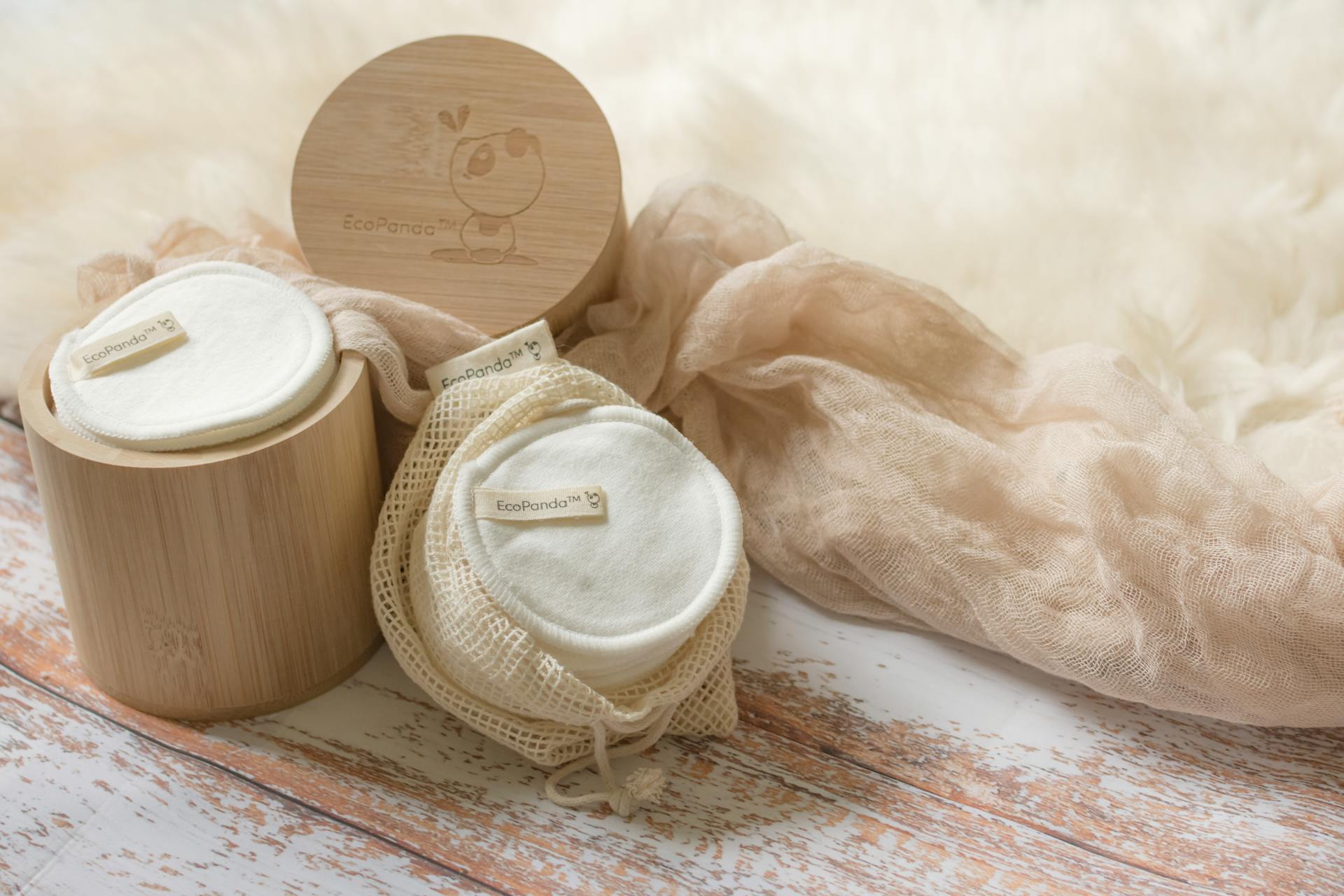
Nylon eco friendly sustainable fabric is a divisive topic in the world of fashion and sustainability. Some people love it for its durability and versatility, while others start digging into its environmental impact as soon as they see it on their favourite bomber jacket. Nylon has been around for decades, but few people know the full story behind this synthetic material. In this article, we will be discovering nylon and exploring whether it can truly be considered a sustainable fabric.
The history of nylon written is fascinating, from its invention by DuPont in the 1930s to its use in World War II for parachutes and other military equipment. Since then, it has become a staple in the textile industry due to its strength, elasticity, and resistance to creasing. However, nylon's production process requires significant amounts of energy and resources, which raises questions about its sustainability. Is nylon really an eco-friendly fabric? Can it be produced sustainably without harming the environment? Let's find out!
Check this out: Environmental Sustainability
Discovering Nylon: The Eco-Friendly and Sustainable Fabric

Nylon is a synthetic fiber, which means that it's a man-made fiber. It's a popular synthetic textile because of its seemingly extra-charming low cost, but did you know that nylon can also be eco-friendly and sustainable? Nowadays, nylon can be made from recycled materials, such as plastic bottles, and can even be biodegradable. This makes nylon a great alternative to traditional fabrics that are harmful to the environment.
1. What is nylon made from? Is Nylon a plastic?
Nylon is a synthetic artificial fiber made from a type of synthetic polymer called polyamide. It is formed by linking long chain carbon-based molecules called polyamide monomers together through strong covalent bonds. There are different types of nylon, including nylon 66, nylon 610, and even nylon 11. Nylon polymers have many uses, including in clothing, rain gear due to its superior chlorine resistance, and even as a material for car parts.
But where does nylon come from? Well, it is derived from crude oil - yikes! Like many other synthetic polymers, nylon is made using crude oil as one of the key starting materials. This means that making nylon fabric is not the most eco-friendly process out there. However, there are steps being taken to make it more sustainable and eco-friendly. Check out some related articles on spandex (what's that?) and modal fabric for more sustainable options!
See what others are reading: What Is Lyocell Sustainable Fabric
2. Where does Nylon come from?
The invention of nylon represents one of the most significant advances in the textile industry. Does Wallace Carothers sound familiar? He was an organic chemist who successfully produced nylon in the early 30s. At that time, DuPont was looking for a synthetic fiber to replace silk, which was expensive and difficult to obtain. Women's hosiery made from silk was also fragile and easily torn. The world changed forever when women's stockings made from nylon hit the market in 1939.
During World War II, nylon became an ideal product for making military equipment such as ropes, parachutes, and flak jackets. After the war ended, nylon became a popular fabric for various industrial applications. It is now known as one of the most innovative textiles ever created. Fun fact: Nylon is made entirely from petrochemicals! Hence, it cannot be considered an eco-friendly or sustainable fabric. Despite this setback, many companies are exploring ways to recycle nylon into new products to reduce waste and lessen its environmental impact.
3. How is nylon made?
The process of making nylon may seem a bit complicated, but it basically starts with a chemical process. First, a polyamide monomer is extracted from crude oil called diamine acid and adipic acid. This crystallized substance is then turned into nylon salt, which is melted down to create a molten substance.
Next, the substance is forced through a showerhead-like device featuring dozens of tiny holes, hardening into thin strands. These resulting fibers are one of nylon's main characteristics - strong and durable. The smaller spool of fibers are then put through a process called drawing, where they are stretched to align the polymer molecules in a parallel structure. This helps to create mixed textiles that are resistant to damage and wear over time.
4. What is nylon used for?
Nylon is a pretty versatile fiber that plays an essential role in various fields, including the fashion industry nowadays. From gloves, shorts, jackets, to shirts, nylon has become one of the most popular fabrics used in clothing. The material also dominates the manufacturing of outdoor gear, such as tents, hiking boots, and military equipment. Special types of nylon like ripstop nylon have been developed for extra durability and strength when out in the open sea or harsh weather conditions.
Apart from its use in the fashion and industrial sectors, nylon serves as a basic element to make gears and bearings work smoothly. It is also used in artistic fields to make crafts, jewelry-related projects, and even guitar strings! With its many applications and uses throughout numerous industries, it's no wonder that Nylon is such a popular fiber today.
You might like: Sustainable and Ethical Fashion
Creating Nylon: From Chain Reaction to Fashionable Creation

Nylon is a special kind of synthetic fabric that has been popular for decades. This eco-friendly and sustainable fabric is made by using chemicals called diamines and dicarboxylic acids, which are then heated to form long chains of atoms. These long chains are spun together into fibers, which can be woven or knit into textiles. The result is a strong and durable material that can withstand wear and tear.
The process used to make nylon involves a chain reaction in which molecules link together to form a giant molecule. Once the chain reaction starts, it cannot be stopped, and the molecules keep linking together until they become too large to move anymore. This unique characteristic of nylon makes it an ideal choice for many applications, including clothing, upholstery, and even car parts. As more people become aware of the benefits of eco-friendly and sustainable fabrics, we can expect to see even more innovative uses for nylon in the future.
Discover the Surprising Truth: Can Nylon Really Biodegrade?

Nylon is a synthetic fabric made from a chemical compound polyamide. It's estimated to take around fifty years or more for nylon clothing to finally degrade. This means that once you toss out your old pair of nylon leggings, they will sit in a landfill for decades, contributing to environmental problems.
While some companies claim that their nylon fabric can biodegrade quickly, the truth is that it requires extensive processing to do so. The process involves using specialized bacteria that break down the fabric into its basic components, such as terephthalic acid (TPA). However, even after this process, the resulting material still poses health risks and cannot be used in products like plastic bottles.
Wearing clothing made from natural fabrics like cotton or linen can help reduce your environmental impact. These materials are biodegradable and won't sit in landfills for decades. While turning back to natural fabrics might not be possible for all types of clothing, it's worth considering when making purchases in an effort to support more eco-friendly and sustainable practices.
Worth a look: Clothing Swap Party
Frequently Asked Questions
What is the most sustainable fabric?
The most sustainable fabric is generally considered to be organic cotton, as it uses less water and harmful chemicals compared to conventional cotton production. However, other sustainable options include hemp, linen, and Tencel made from sustainable wood pulp.
How many products are made of recycled nylon?
There is no exact number of products made from recycled nylon as it varies by company and industry, but more and more companies are using recycled nylon to create sustainable products.
What is a good alternative to nylon?
Polyester is a popular alternative to nylon. It is durable, lightweight, and resistant to moisture and chemicals. Other alternatives include natural fibers like cotton, silk, and wool.
Are nylon fabrics 100% Nylon?
No, nylon fabrics are not always 100% nylon. They may contain other fibers such as spandex or polyester for added stretch or durability.
Is nylon eco-friendly?
Nylon is not eco-friendly as it is a synthetic material made from petroleum. It also takes a long time to decompose, contributing to environmental pollution.
Featured Images: pexels.com


